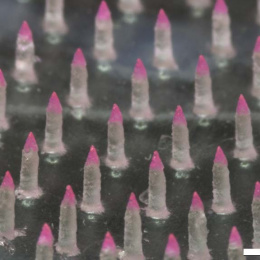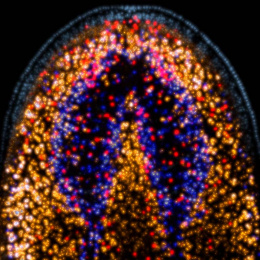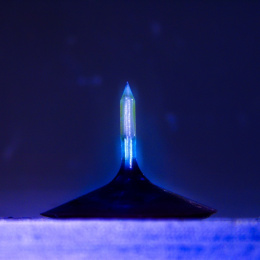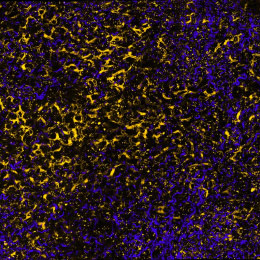Nerves of Gold 5
Nerves of Gold 5
Jonathan K. Tsosie, Omar F. Khan
Koch Institute at MIT, MIT Department of Chemical Engineering, Institute of Medical Engineering and Science
Restorative bionics has fascinated scientists and engineers since the Six Million Dollar Man.* However, the reality of such prosthetics has been hindered by the rigid structure of conventional electronics (think circuit boards). Two major approaches have been developed to allow electronics to conform to the elasticity of the soft muscle tissue within the human body. First, the individual electronic components of the conventional circuit board have been dismantled and distributed in arrays, which are then printed on flexible biocompatible polymers. Second, the conventional stiff linear metal circuits that control the flow of electrical energy have been reengineered into flexible fractal patterns (shown here). Such patterns allow bionics to maintain the use of high current loading, hard metal components while providing the flexibility to work with the human body.
See the winning image from this project here.






